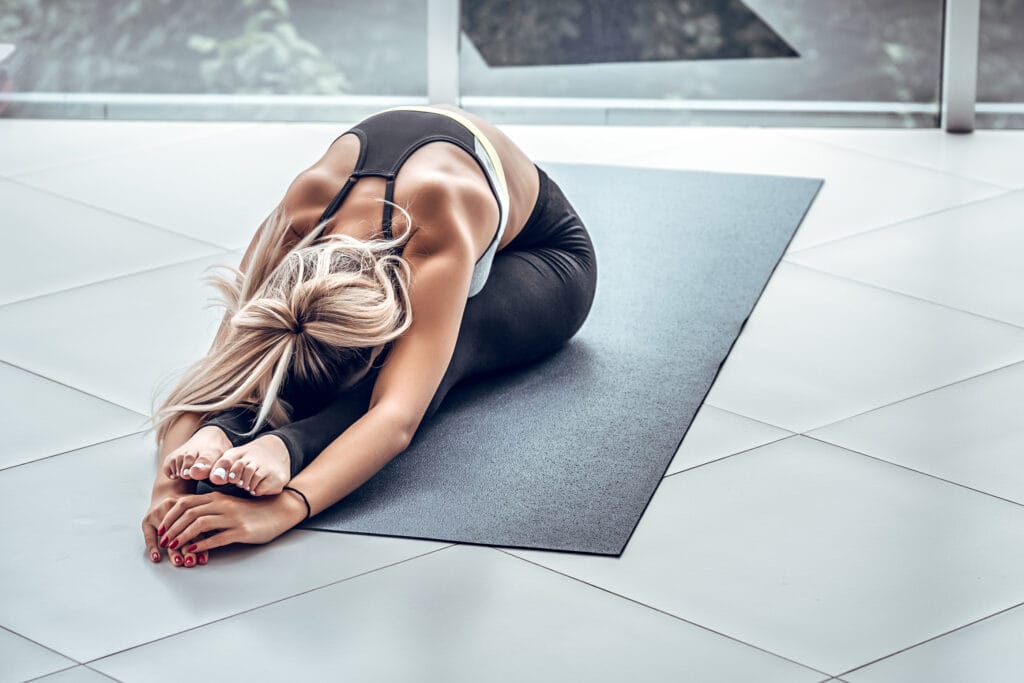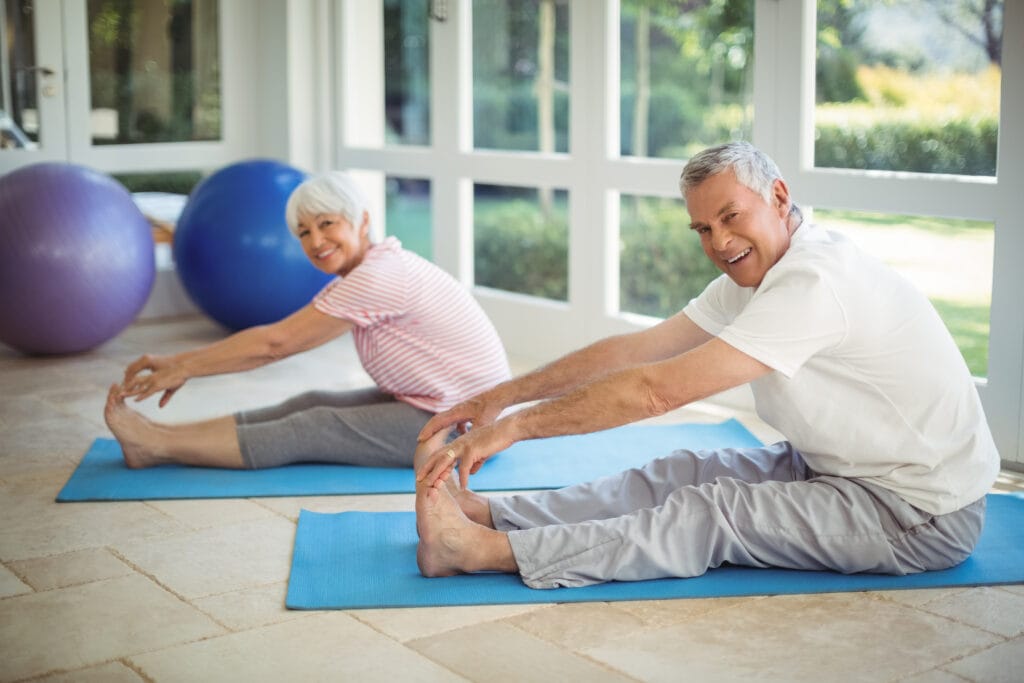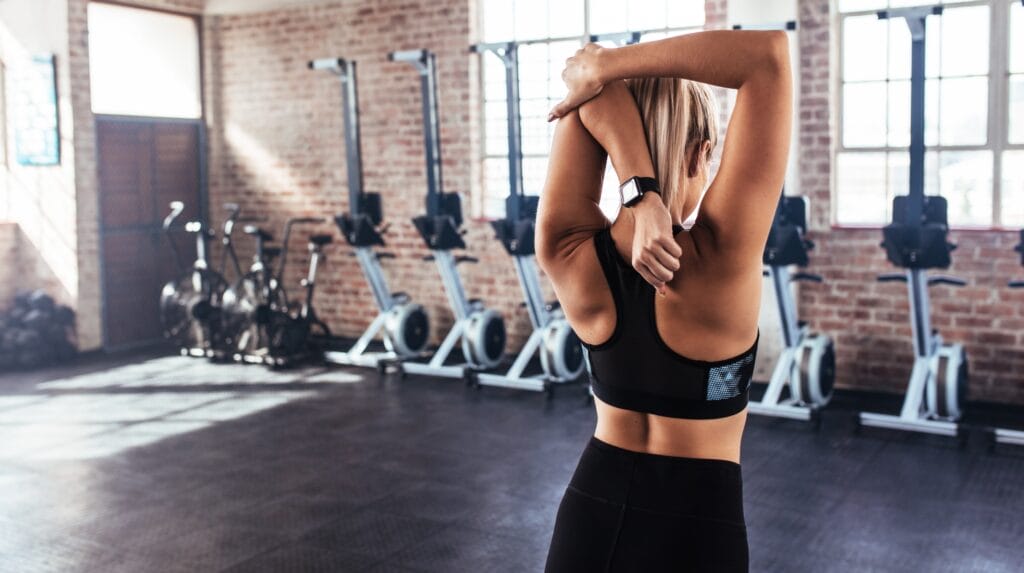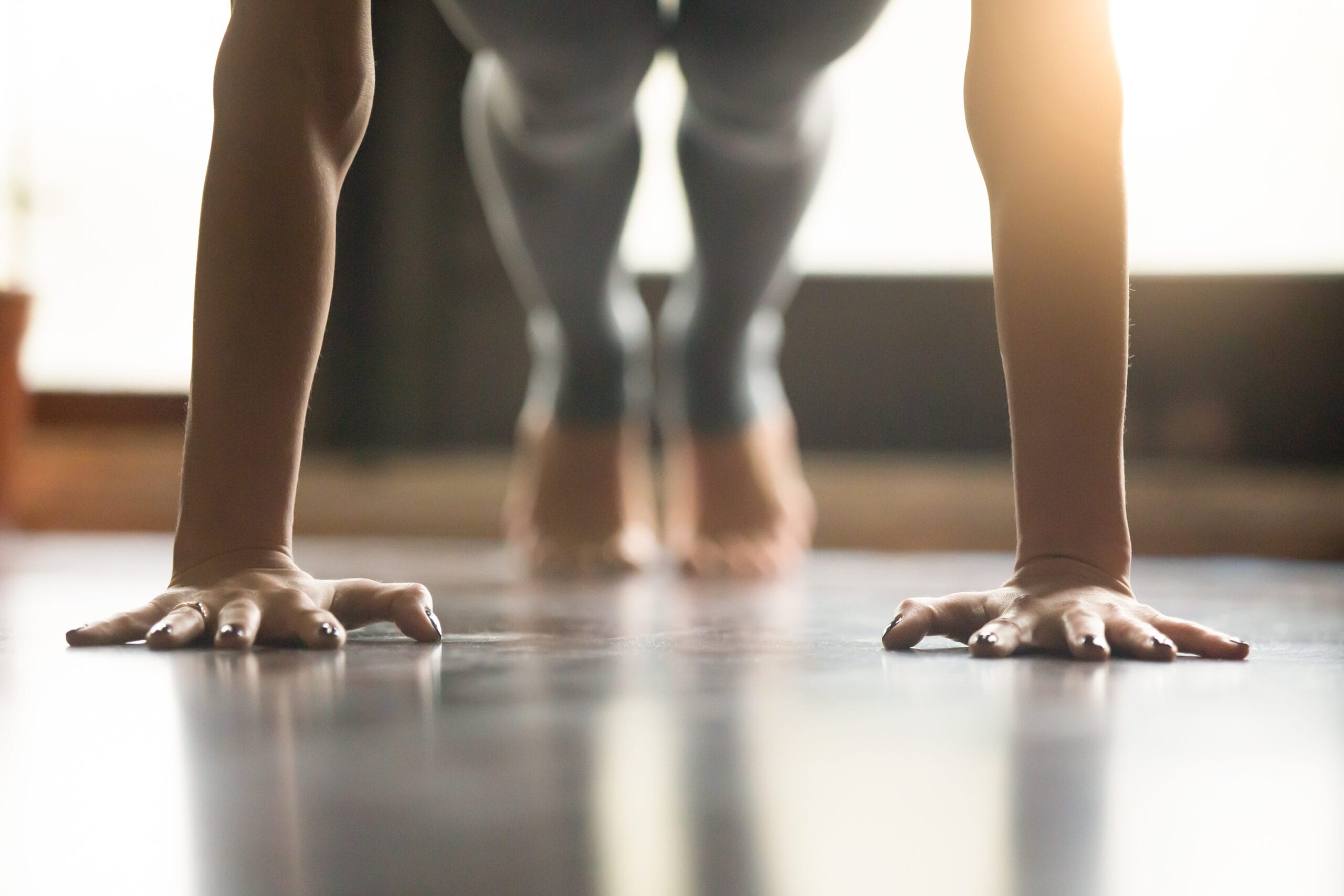
Working out from home offers loads of benefits, but one drawback is that you may find yourself working out alone often.
The lack of a spotter can be an issue, but this also means we might not have someone there encouraging us to stretch and warm up effectively.
And as boring as stretching can be, it’s an essential part to well-rounded fitness.
Incorporating regular stretching exercises into your routine can help alleviate muscle tension, improve flexibility, enhance circulation, and promote overall recovery.
It can also help reduce your chances of overtraining, which comes with its own list of setbacks and challenges.
As a physical therapist, a big part of my job is teaching people how to use stretching to relieve their aches and pains, so I know first-hand how important this stuff is.
And now I’m here to convince you.
In this guide, we’ll go over all the perks stretching can offer, as well as offer tips to help get the most out of your stretching routine.
The Benefits of Stretching
I don’t have any numbers to back this up, but I’d guess about 95% of us don’t stretch as much as we should.
And yes, I’m including myself in that vast majority.
Hey, I get it – I don’t find stretching anymore enjoyable than the rest of ya, but the fact remains that this stuff can make a big difference when it comes to making progress in the gym or improving overall quality of life.
Here’s a rundown on some of the perks that come with stretching regularly:
Enhancing Flexibility and Range of Motion
The most obvious effect of stretching is its role in improving flexibility and increasing the range of motion in joints.
After all, static stretching generally involves elongating muscles for prolonged periods, so that the muscles themselves physically become longer.
This is what we mean when we talk about improving flexibility.
And the more flexible your muscles are, the more range of motion they allow your joints to move through – in other words, stretching can improve range of motion.
Increased flexibility not only enhances athletic performance but it can also contribute to better posture and reduce muscle stiffness.
Injury Prevention and Recovery
One of the key reasons to incorporate stretching into your home gym routine is its role in injury prevention.
Dynamic stretches before a workout can help prepare your muscles for activity, reducing the risk of strains and injuries.
Post-workout static stretches aid in muscle recovery, alleviating muscle soreness and preventing tightness that can lead to injuries over time.
The improved range of motion that can be gained through regular stretching can also help ensure improved technique during exercises, decreasing your chance of injury as well.
And this goes beyond the gym.
For example, having tight hamstrings puts you at increased risk for several injuries, including back injury when bending down to pick something up.
In this case, improving hamstring flexibility could decrease the risk of back pain during daily activities.
Improved Circulation and Reduced Muscle Tension
Stretching promotes better blood circulation throughout the body as well.
This increased blood flow delivers essential nutrients to muscles and helps eliminate waste products, contributing to faster recovery.
Additionally, stretching releases muscle tension, providing relief from the stresses of daily life and prolonged periods of sitting.
Which can help reduce aches and pains that build throughout the work day.
For example, sitting in front of a computer all day tends to cause tightness in our pecs (chest muscles), our scalenes (neck muscles), and even our upper traps (strong muscles between neck and shoulders).
This tightness often leads to poor posture and neck/shoulder pain.
Well, a big part of fixing this problem is stretching these tight muscle groups and strengthening the opposing muscle groups, in this case the muscles in the upper back, to help maintain proper posture at the desk.

Enhancing Mind-Body Connection
Stretching’s not just physical either – it also fosters a connection between the body and mind. I
Incorporating mindful stretching into your home gym routine allows you to focus on your breath, release stress, and create a sense of balance.
This mind-body connection can help contribute to improved mental well-being and reduced levels of stress and anxiety.
You know, stuff we can all benefit from these days.
Tailoring Your Stretching Routine to Your Home Gym
The beauty of stretching is its adaptability to various home gym setups.
So whether you have limited space or a dedicated workout area, you’ll still be able to fit stretching into your regular routine.
From relaxing static stretches to more advanced ballistic moves, it’s all about finding the perfect balance for you.
Keep in mind, some stretching is better than nothing – you don’t have to become a yogi to appreciate the benefits mentioned above.
Here are some helpful tips to help get you stretching more at home:
Stretching Tips
- Create a Dedicated Stretching Space
This one isn’t necessary, but designating a quiet and comfortable area in your home for stretching can make the whole process more enticing.
It can also help you focus on your stretching routine without distractions. Ensure the area is well-lit and has enough room for your movements. - Start with Dynamic Stretches
Kickstart your stretching routine with dynamic stretches to warm up your muscles. Dynamic stretches involve controlled movements and help increase blood flow, preparing your body for more intense stretching.
Try incorporating moves like leg swings, arm circles, and torso twists into your warm-up routine. - Focus on Major Muscle Groups
Prioritize stretching major muscle groups, including your hamstrings, quadriceps, hip flexors, calves, pecs, shoulders, and back.
Tailor your routine to target areas that may be tight or prone to tension. Consistency in stretching these muscle groups can lead to improved flexibility over time. - Breathe Mindfully
Pay attention to your breath during stretching – deep, mindful breaths can enhance relaxation and promote better stretching.
Inhale deeply as you prepare for a stretch, and exhale slowly as you ease into the stretch. Breathing mindfully also helps reduce stress and tension. - Hold Each Stretch
While dynamic stretches are crucial for warm-up, incorporating static stretches is equally important for flexibility.
Once warm, hold each stretch for 15-30 seconds, allowing the muscles to lengthen and relax. Avoid bouncing, and focus on a gentle, steady stretch to prevent injury. - Incorporate Stretching into Your Routine
Integrate stretching into your daily routine. Whether it’s a morning stretch to wake up your body or an evening routine to unwind, consistency is key.
Consider pairing stretching with other activities, such as watching TV or taking short stretch breaks during the work day. - Explore Various Stretching Techniques
Mix up your stretching routine with different techniques. Don’t be afraid to explore yoga poses, Pilates, or even incorporate foam rolling for myofascial release.
Variety not only keeps things interesting but also ensures a well-rounded flexibility routine. - Listen to Your Body
Pay attention to your body’s signals. Stretch to the point of mild tension, not pain.
If you feel discomfort, ease off the stretch. Over time, as your flexibility improves, you can gradually deepen your stretches.

Final Thoughts
Well, there ya have it.
If that doesn’t wanna get you stretching more, I don’t know what will.
Jokes aside, embracing a consistent and mindful stretching routine at home can unlock a world of benefits for your body.
Whether you incorporate static stretching, dynamic stretching, foam rolling, yoga, or tai chi into your routine, prioritizing flexibility and mobility is crucial for preventing injuries and optimizing performance.
It also just makes you feel better, especially if you’re as tight and stiff as I am in the morning.
And I don’t think I mentioned this earlier, but stretching becomes more important as we get older because this is where range of motion issues can really start limiting performance with daily tasks.
So seniors, make sure you’re stretching daily (check out this article for a list of the most important stretches for seniors).
So, roll out that yoga mat, find your favorite stretch playlist, and make stretching a daily ritual that contributes to your overall well-being.
Remember, stretching is not just a warm-up or cool-down activity: it’s a fundamental component of a balanced training program that supports long-term success in your home gym.


